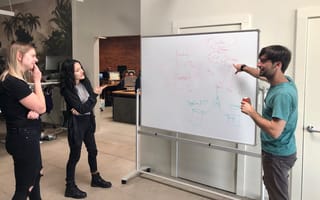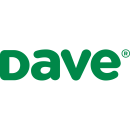
When it comes to choosing a software development life cycle, there’s no one-size-fits-all approach.
There are a handful of factors to consider when evaluating methodologies like Agile and Scrum, such as the needs of the business and its stakeholders, the size and structure of the engineering team and the size and complexity of its software. And the use of the same methodology can vary from company to company.
“While we follow the typical Scrum technique, we also put our own spin on it. For example, we don’t have a scrum master,” said Dave Inc. Director of Engineering Dick Fickling. “Instead, we focus on quality assurance and data to guide our work and prioritization throughout the organization.”
Fickling said the focus on quality at the consumer-facing banking app pushes his team to release software updates weekly. StackCommerce Lead Software Engineer Enrique Canals said his team also works under the Scrum framework. However, they mix in Kanban, which Canals said gives the engineering team a greater ability to plan and test.
“Planning and prototyping have always been at the core of our software development process,” Canals said. “The predictability and reliability this process provides allows us to focus more on writing and shipping great software and less on processes and procedures.”
The StackCommerce team even created a game to help them objectively gauge the effort required to work through upcoming backlogs following sprints. Developers at the two companies have taken popular practices and made them their own based on their specific needs and workflows.
Dave Inc.’s Director of Engineering Dick Fickling said adhering to a software development life cycle that allows his team to release updates weekly benefits both customers and engineers. The leader said frequent updates improve the user experience while giving new developers the opportunity to drive tangible impact on the platform early in their careers.
What steps are involved in your team’s software development life cycle?
Our software development life cycle starts with the structure of our team. We have several squads who cover different parts of our product. Each squad has a product manager, quality assurance engineer, designer and between two and six engineers.
The executive team works with product managers to set quarterly goals for the organization. The PMs then break down those goals into quarterly initiatives, working with others on the team to make sure they’re achievable and scoped appropriately. Then, the PM prioritizes the work that makes it into each two-week sprint using the Scrum methodology.
While we follow the typical Scrum technique, we also put our own spin on it. For example, we don’t have a scrum master. Instead, we focus on quality assurance and data to guide our work and prioritization throughout the organization.
Our focus on QA has allowed the development team to have an Agile-focused approach. We release weekly in the app stores, which is rare among software companies. We’re able to do that because we hired our first QA manager when we were a team of around five and throughout the company’s history, we’ve prioritized QA. Quality assurance goes through a full regression and test process every week.
New members of the team can immediately contribute and see their work go live within a couple of days.”
How did you decide on this particular structure?
We decided on this structure very early on and have continuously evolved it to be in line with the needs of the business. As a fintech app solving pressing financial challenges for our users, our approach needs to be very nimble and allow for rapid iteration and innovation.
Shipping mobile updates every week allows us to not only test and iterate quickly to better serve our users, but it also keeps the team energized. In addition to improving our users’ experience with frequent updates, this weekly approach means that new members of the team can immediately contribute and see their work go live within a couple of days, which is very motivating.
StackCommerce Lead Software Engineer Enrique Canals said development teams at the company have used an evolved version of the Agile-based methodology since the company’s founding in 2011. Canals said changing their life cycle for enhanced reliability is a crucial component of the dev team’s process, as the platform reaches over 1 billion users per month.
What steps are involved in your team’s software development life cycle?
We practice a form of Agile software development that utilizes aspects of both Scrum and Kanban. We work in sprints, typically two weeks in length, where pre-planned engineering requirements are worked on and completed, releasing incremental progress toward a specific goal. Before the end of a sprint, teams meet to discuss the backlog of upcoming tasks and play a game known as “planning poker.” This game allows the team to reduce bias while unanimously assigning a score of estimated effort to a specific task, also known as “story points.”
When a sprint cycle ends, teams perform a sprint-retrospective to determine what went well, what didn’t and what can be improved. The result of this exercise is a list of action items for the team to take into consideration during the next sprint cycle.
When a sprint cycle ends, teams perform a sprint-retrospective to determine what went well.”
How did you decide on this particular structure?
We have experimented with various organizational structures focused on different parts of the business and customer experience. However, planning and prototyping have always been at the core of our software development process. The predictability and reliability this process provides allows us to focus more on writing and shipping great software and less on processes and procedures. Our commitment to this Agile workflow has created a stable and reliable infrastructure that has benefited our business and customers for almost a decade.








.jpg)
.png)